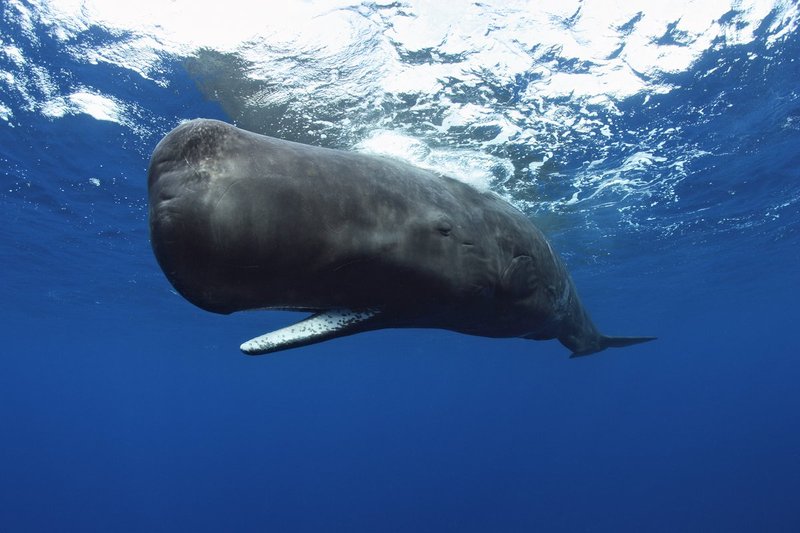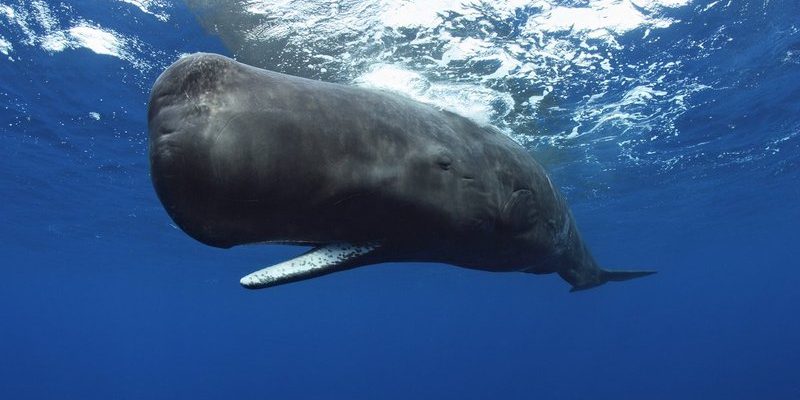
So, what exactly makes sperm whales so important? Well, let’s dive in and explore their role. Imagine the ocean as a grand theater with sperm whales as its main actors. They impact everything from the nutrient cycle to the health of other marine life. With their massive bodies and unique feeding habits, they help shape the underwater environment in ways that are both surprising and essential.
Understanding Sperm Whale Biology
To appreciate the sperm whale’s role in marine ecosystems, we first need to know a bit about them. Sperm whales are the largest toothed whales and can reach lengths of over 20 meters (about 66 feet). These impressive mammals are easily recognized by their large, block-shaped heads and sleek bodies. They have a distinctive lifestyle that includes diving deep into the ocean for food, primarily squid, but they’ll also munch on fish.
One of the most fascinating aspects of sperm whale biology is their echolocation ability. Using sound waves, they can locate prey in the darkest parts of the ocean. It’s like having a built-in sonar system! This ability not only helps them find food but also plays a significant role in the health of their environment.
Additionally, sperm whales can dive incredibly deep—more than 2,000 meters (about 6,600 feet). Imagine holding your breath for over an hour while exploring the ocean depths; that’s a regular day for these mighty creatures. Their long dives and massive size mean they can access food sources that other marine animals can’t reach, which impacts the entire food web.
Nutrient Cycling and Ecosystem Health
You might be wondering how these giants contribute to nutrient cycling. When sperm whales feed, they consume vast amounts of squid and fish. After digesting their meals, they release nutrient-rich waste back into the ocean. This waste acts like fertilizer for the marine environment.
Here’s the thing: these nutrients enhance the growth of phytoplankton, the tiny plants at the base of the ocean food chain. Phytoplankton absorb carbon dioxide and produce oxygen, playing a vital role in regulating our planet’s atmosphere. Without sperm whales and their nutrient contributions, the health of the ocean—and, by extension, the planet—would suffer.
Moreover, as sperm whales swim through the ocean, they stir up sediments. This movement helps redistribute nutrients that other marine life depends on, promoting a more vibrant and diverse ecosystem. It’s a beautiful cycle that shows how interconnected life in the ocean truly is.
Impact on Other Marine Species
Sperm whales don’t just help their environment directly; they also influence the lives of many other marine species. For instance, their feeding habits can affect the populations of squid and fish. When sperm whales hunt, they often target the larger, older individuals of the species, which can help to balance populations.
Think of it like a natural population control method. Keeping populations in check prevents overfishing and allows smaller or younger fish populations to thrive. In this way, sperm whales support the overall health of their ecosystem, promoting diversity and resilience among marine species.
Additionally, when sperm whales migrate, they often travel through different habitats. During these migrations, they interact with various marine animals—from fish to seabirds. These interactions can also lead to increased nutrient mixing as they travel, further enhancing the waters they swim through.
Climate Regulation through Carbon Sequestration
You might be surprised to learn that sperm whales play a role in fighting climate change too. Their movements and waste influence carbon sequestration, a process that traps carbon dioxide in the ocean.
When sperm whales dive deep, they contribute to the vertical mixing of water, bringing nutrients from the bottom to the surface. This not only helps feed phytoplankton but also aids in the formation of organic matter. When these tiny plants die, they sink to the ocean floor, taking carbon with them. This process helps to store carbon long-term, reducing the amount of CO2 in the atmosphere.
In essence, sperm whales serve as nature’s carbon bank. By supporting the growth of phytoplankton and aiding in carbon storage, they help regulate our climate. It’s a reminder of how interconnected all life forms are—even those that seem far removed from land-based concerns.
Challenges Facing Sperm Whales
Despite their importance, sperm whales face significant threats today. Human activities—like commercial whaling, pollution, and climate change—are putting their populations at risk. Historically, sperm whales were heavily hunted for their oil, which devastated their numbers. Although whaling has largely been curtailed, the scars of that history remain.
Pollution is another pressing issue. Chemicals and plastics that end up in the ocean can disrupt marine ecosystems and directly harm sperm whales. For instance, pollution can lead to toxic exposure when whales consume contaminated prey. This not only affects their health but also has ripple effects throughout the food web.
Finally, climate change poses a particularly daunting challenge. As ocean temperatures rise and habitats shift, sperm whales may struggle to find food and suitable living conditions. These changes could alter their migratory patterns and breeding habits, leading to further declines in their populations.
Conservation Efforts and the Future of Sperm Whales
Understanding the importance of sperm whales has prompted a variety of conservation initiatives aimed at protecting these majestic creatures. Organizations worldwide are working to reduce threats and increase awareness about the role sperm whales play in marine ecosystems.
Efforts like stricter fishing regulations and marine protected areas help to create safer environments for sperm whales. These regions allow marine life to thrive without the pressures of human activity. Additionally, educational programs aim to inform people about the significance of sperm whales and the need to protect their habitats.
You might also come across projects focused on research and monitoring. Scientists are studying sperm whale populations, behaviors, and migrations to learn more about their needs and how to ensure their survival. By understanding their habits and habitats, we can better protect these giants and the ecosystems they support.
Why We Should Care
So, why should you care about sperm whales? Beyond their size and intrigue, they are a vital part of our planet’s health. Their role in marine ecosystems impacts everything from local fisheries to global climate systems. Protecting sperm whales means protecting the delicate balance of life in our oceans.
We all have a stake in this issue. When we support conservation efforts or choose sustainable products, we contribute to the well-being of not just sperm whales but entire marine ecosystems. After all, their survival ensures that the ocean remains a flourishing, vibrant place for generations to come.
In conclusion, sperm whales are more than just magnificent creatures—they are a key part of the marine ecosystem puzzle. By understanding and valuing their contributions, we can help ensure this incredible species continues to thrive in our oceans.

